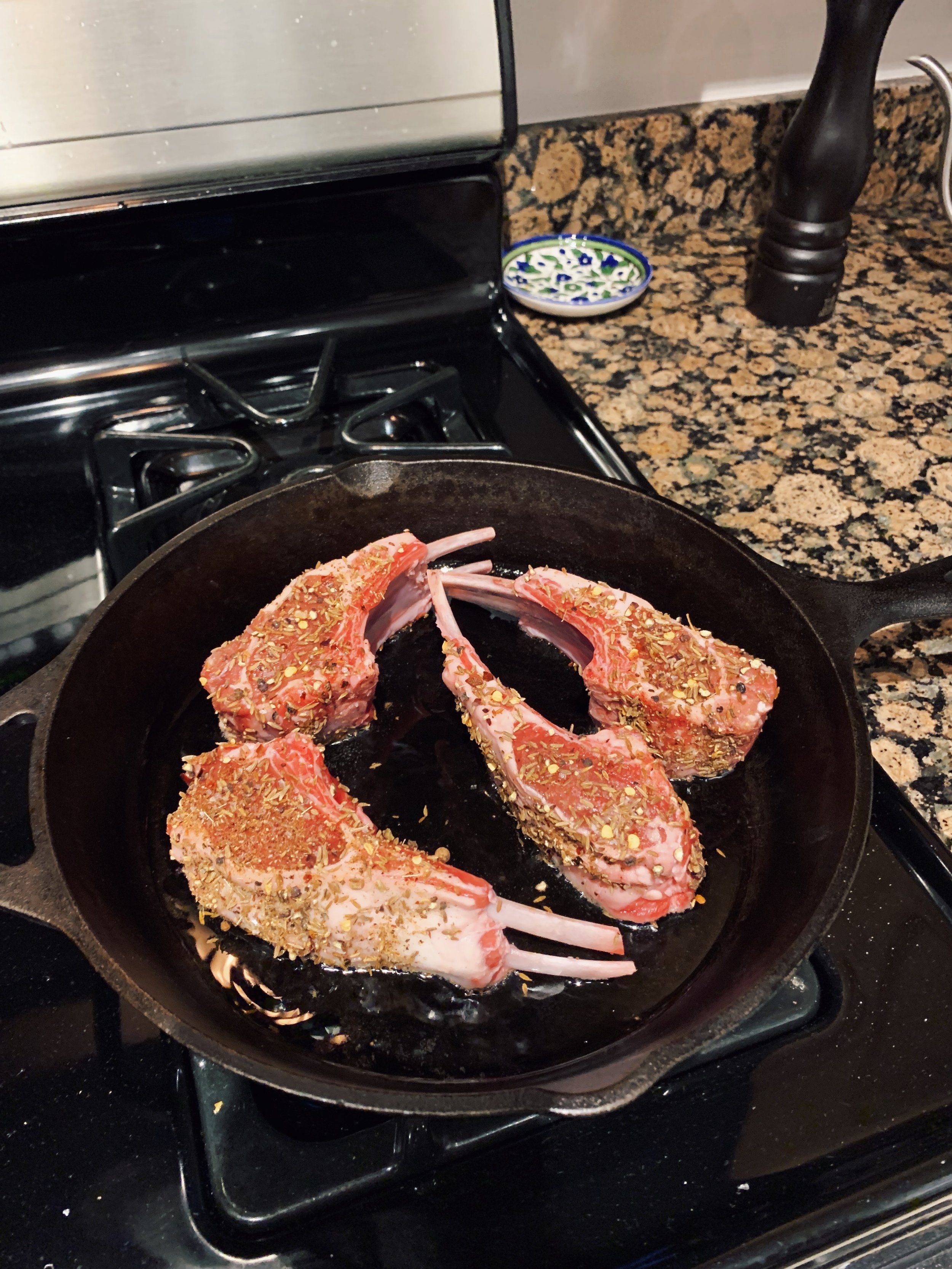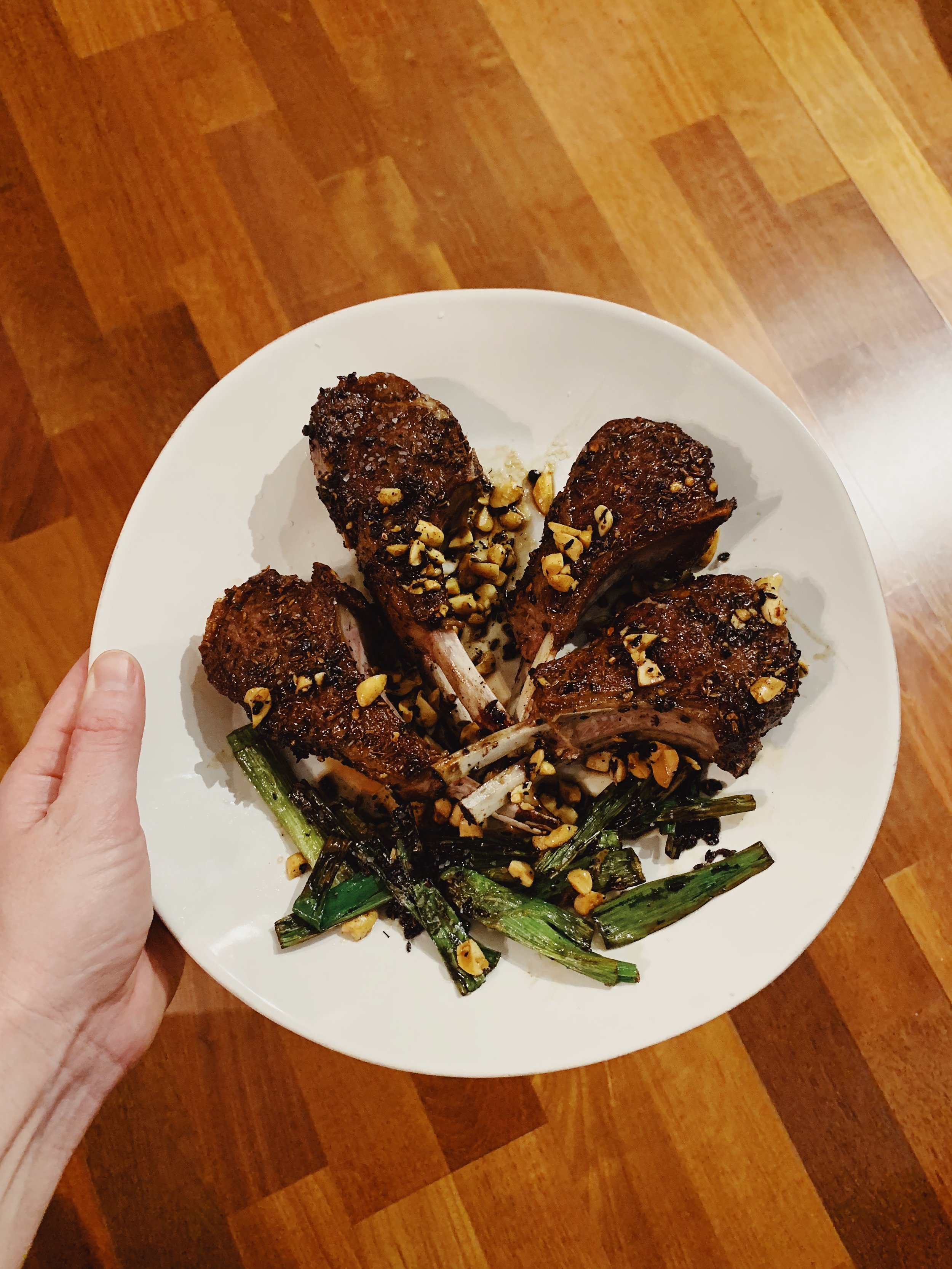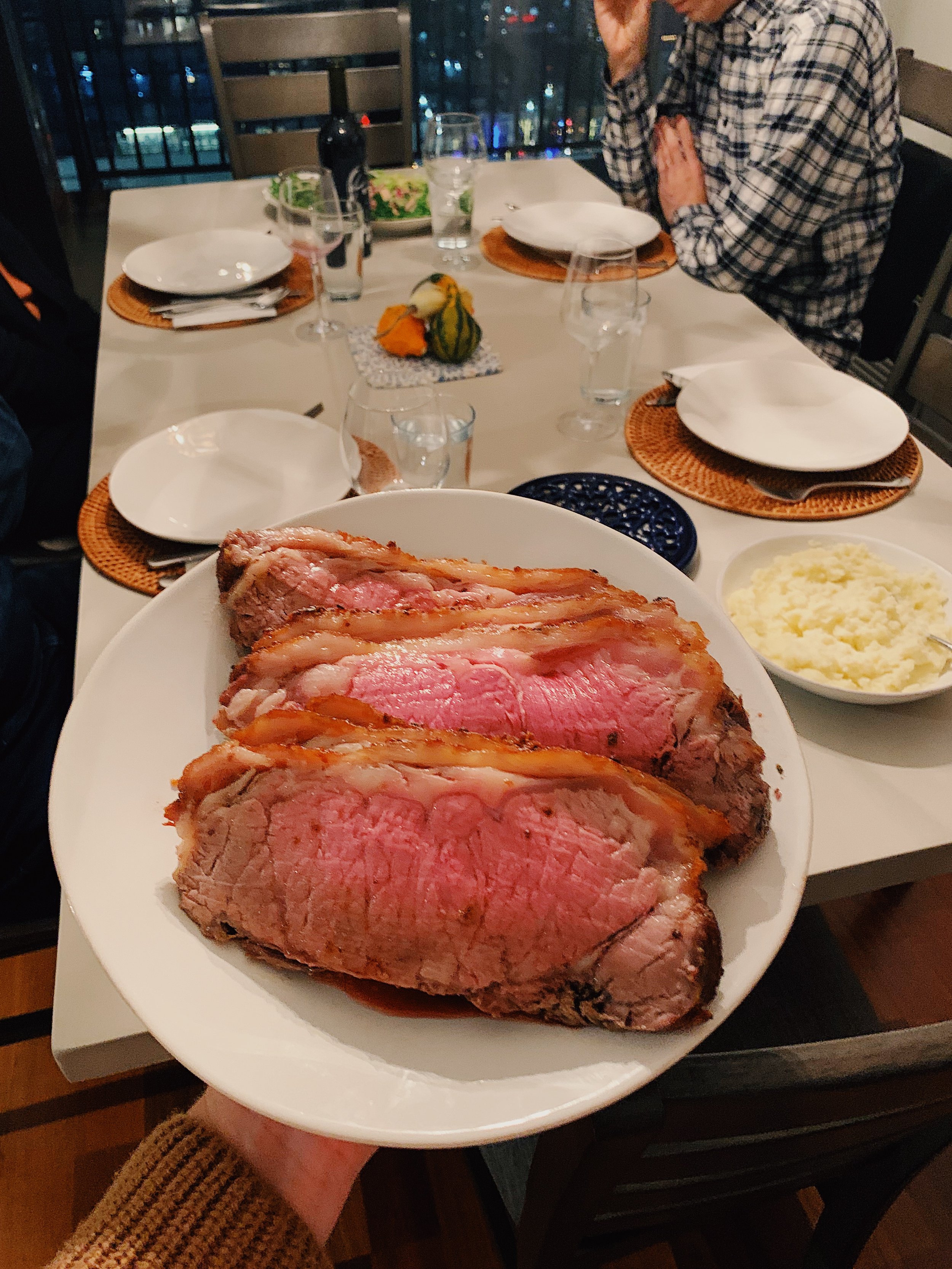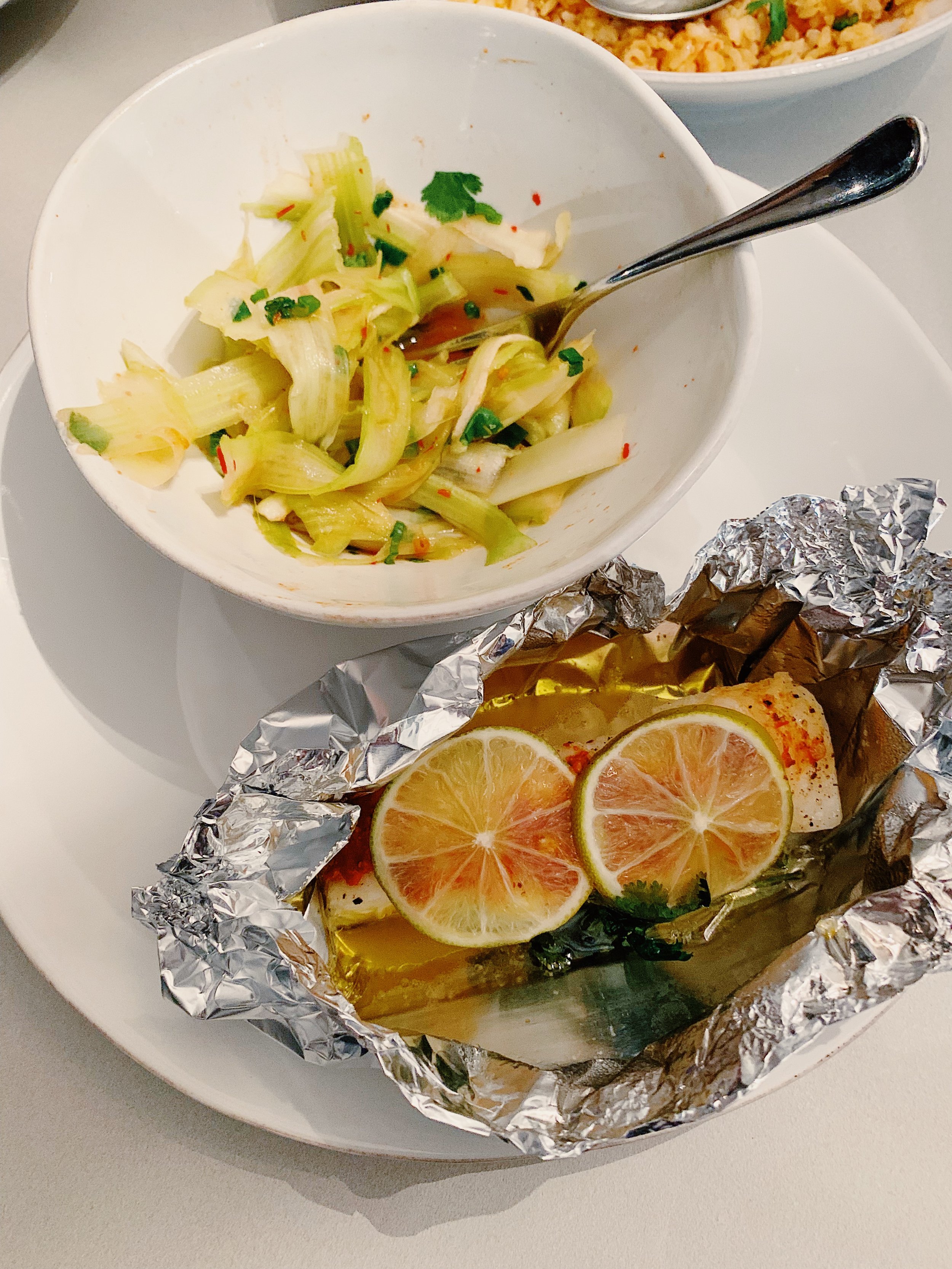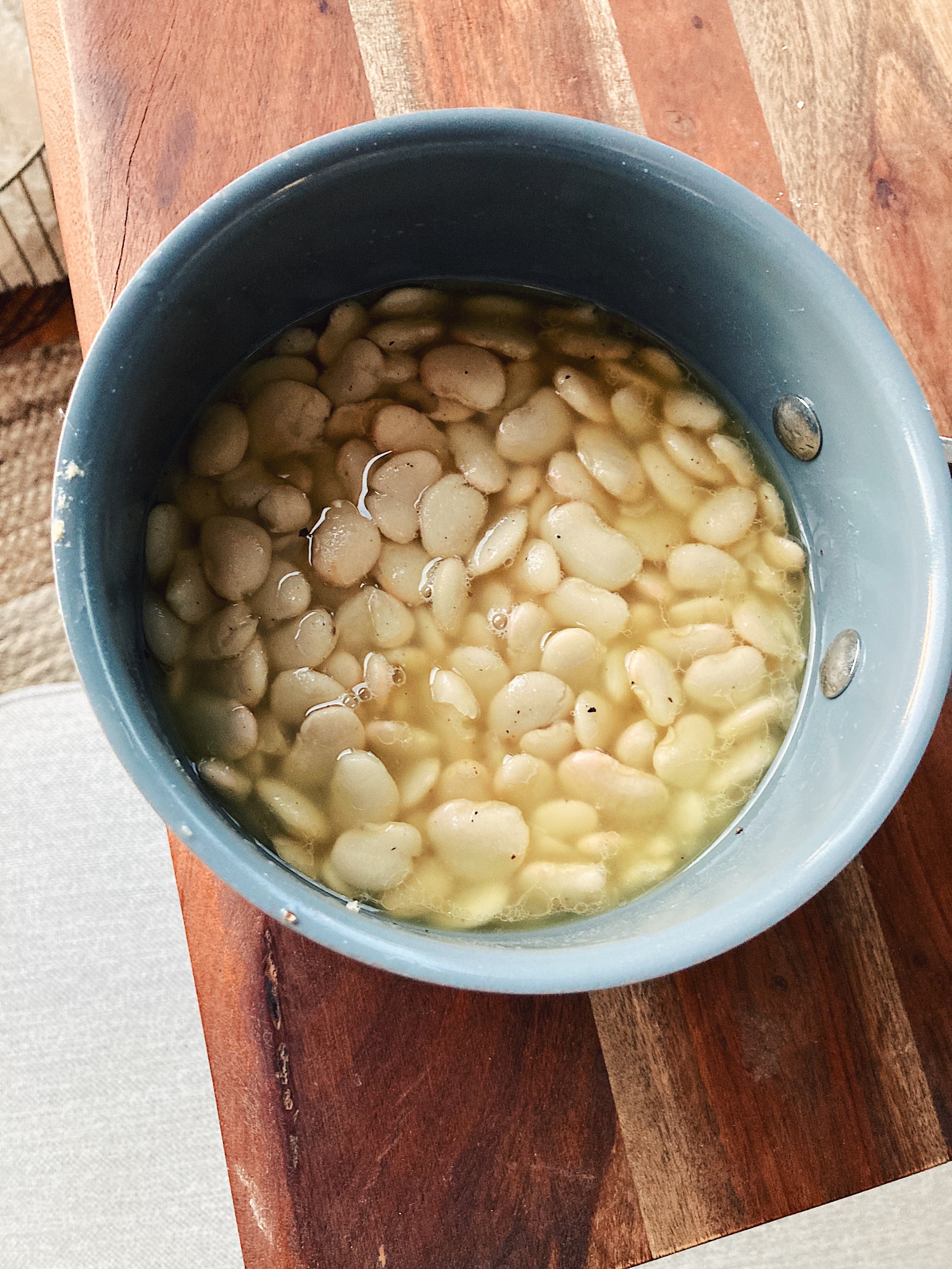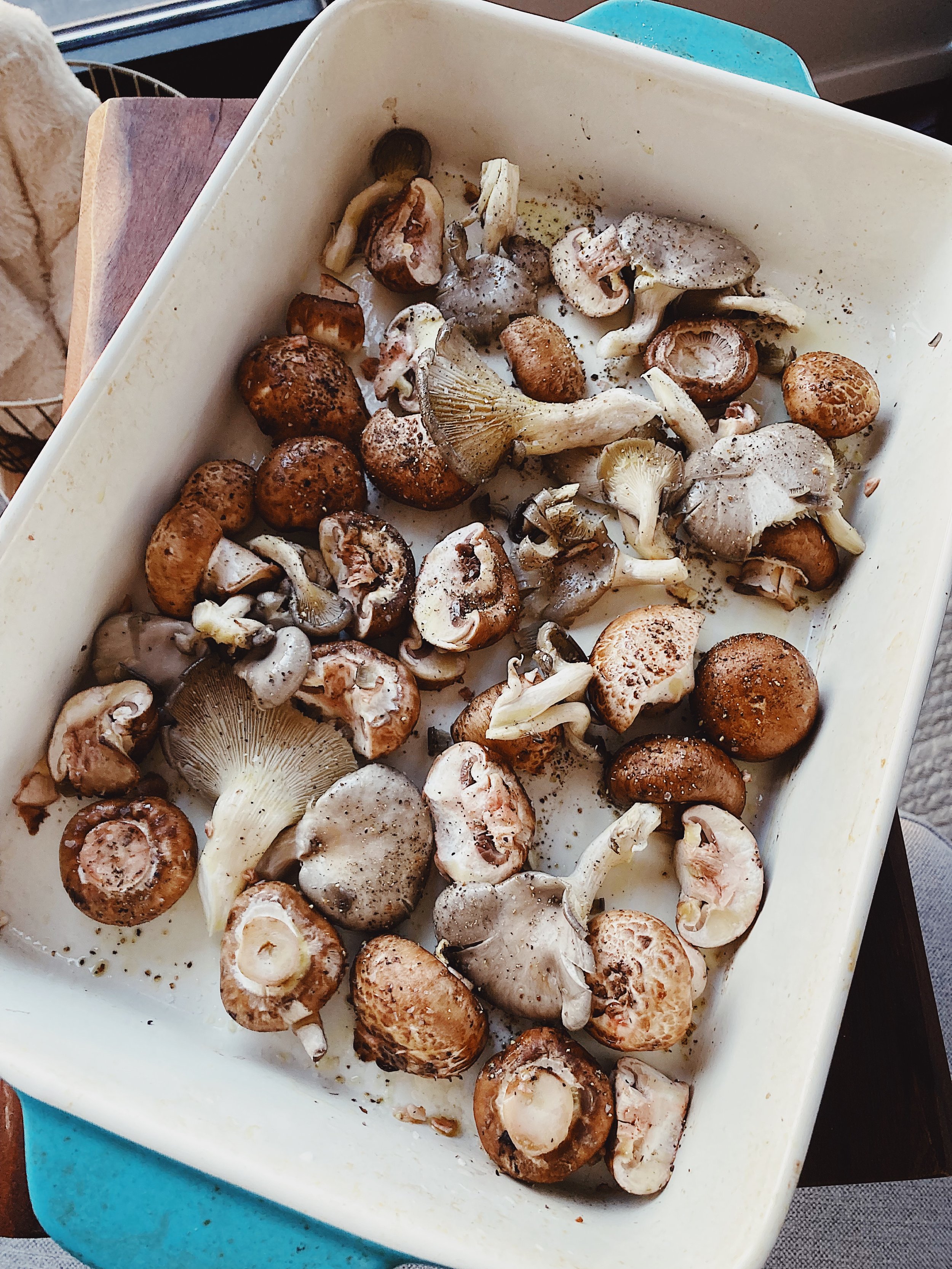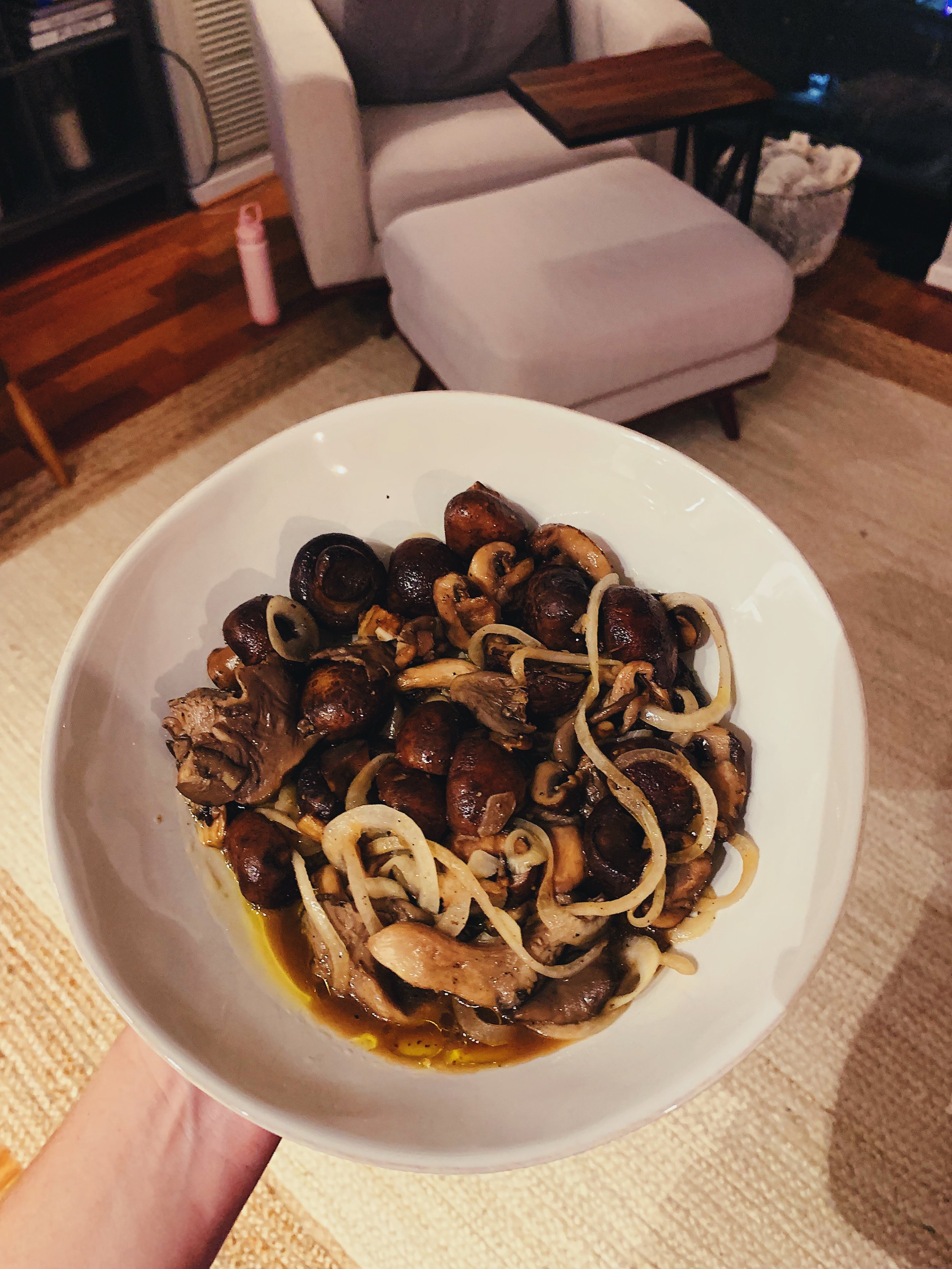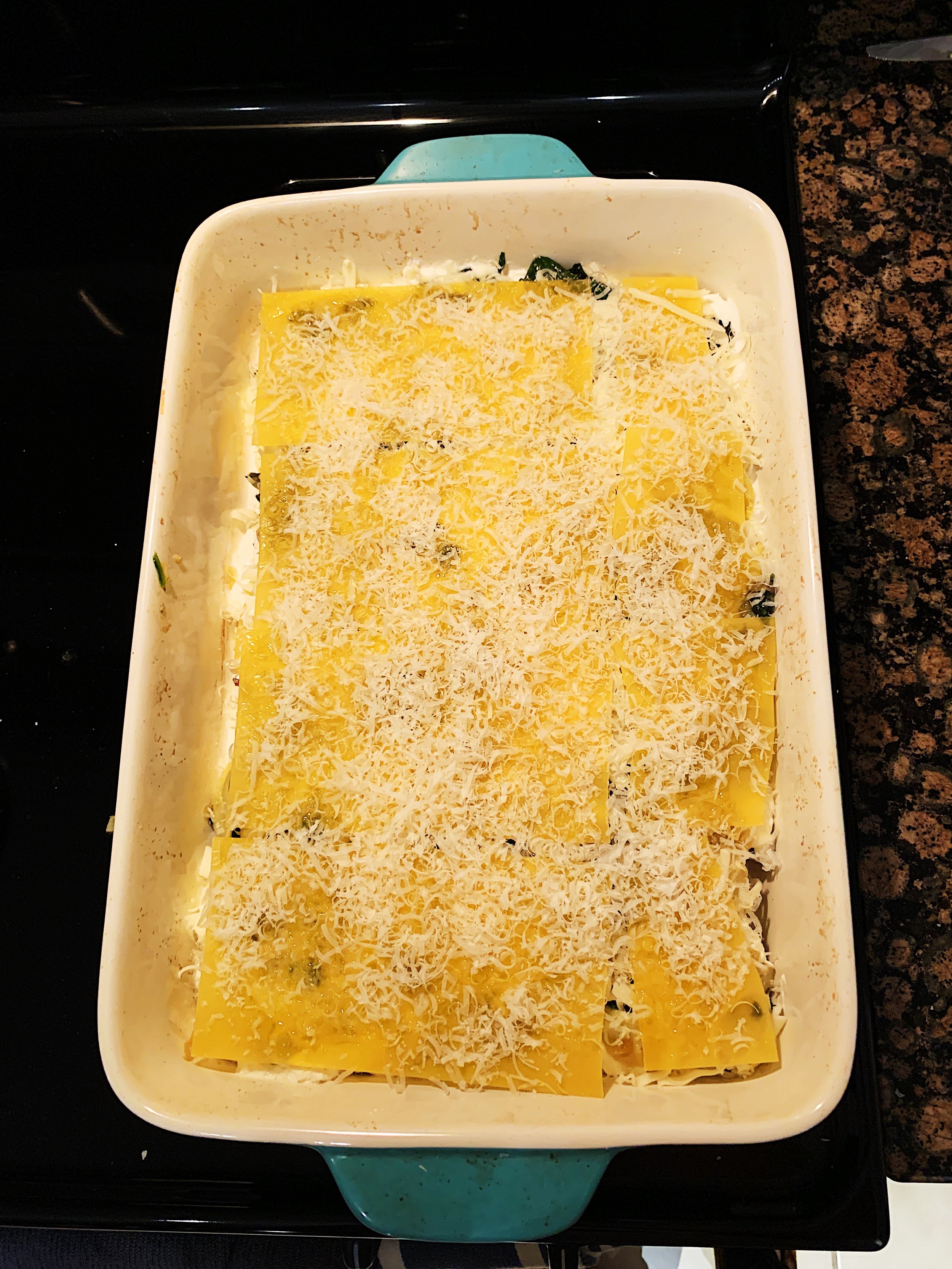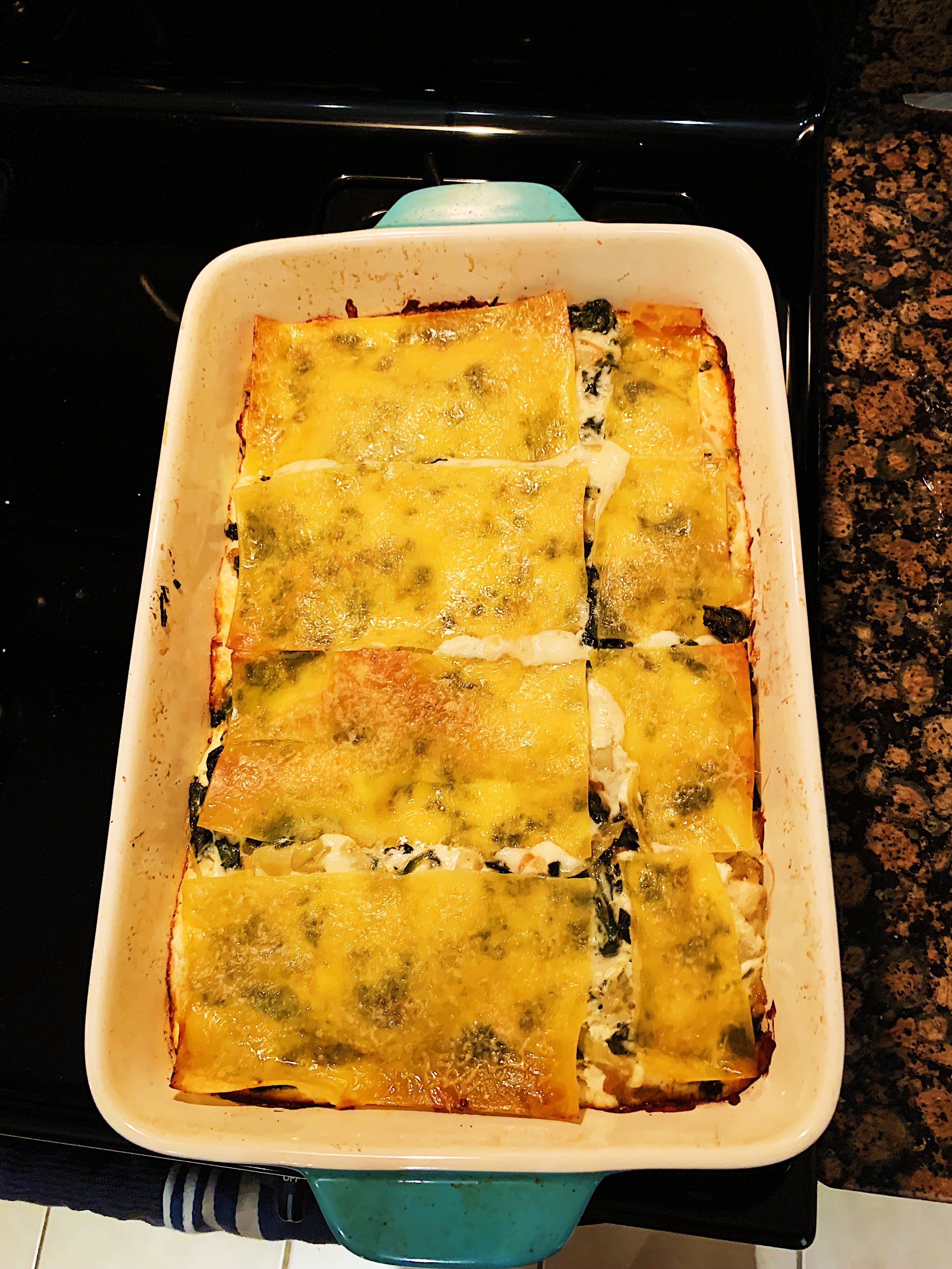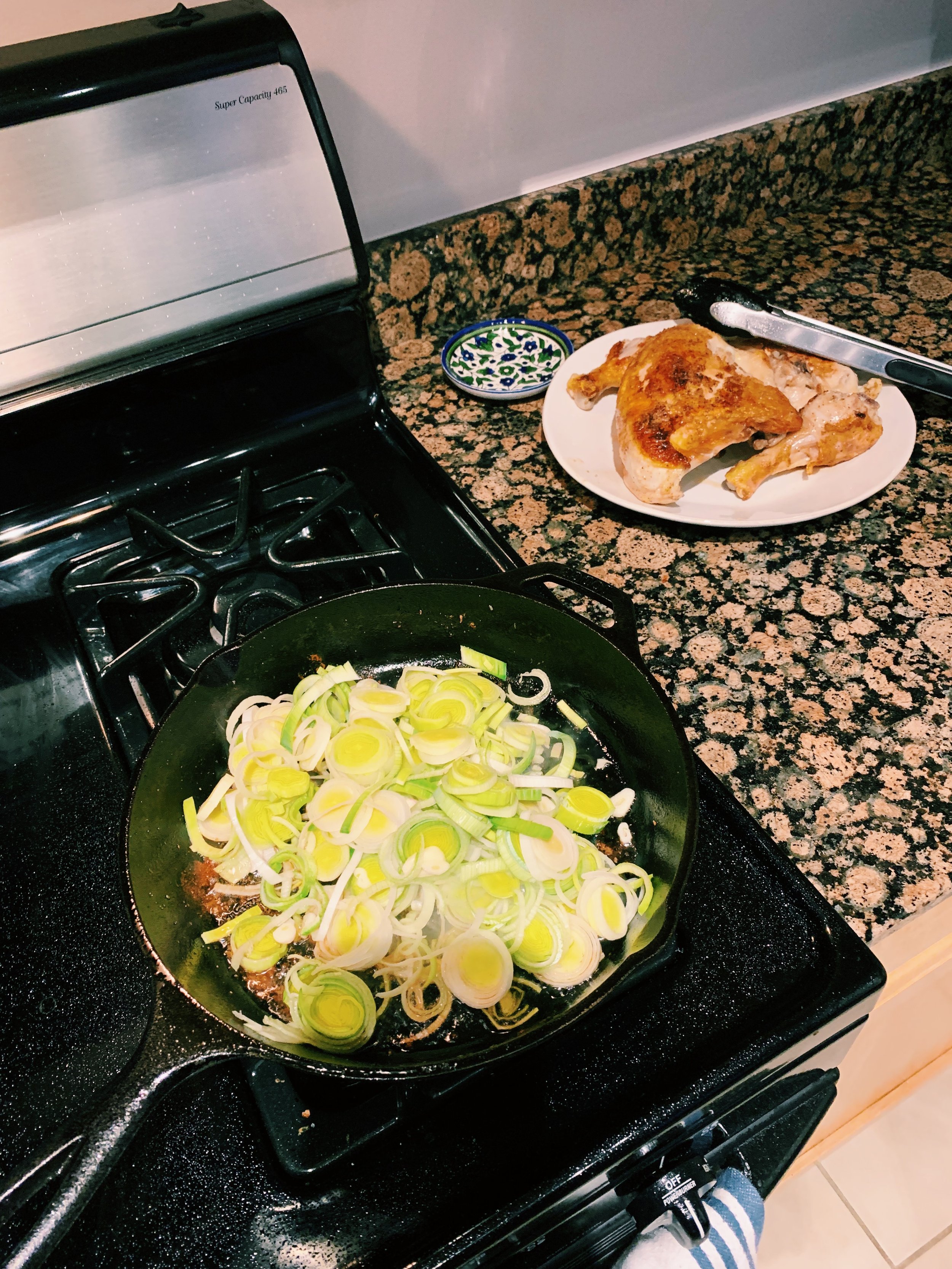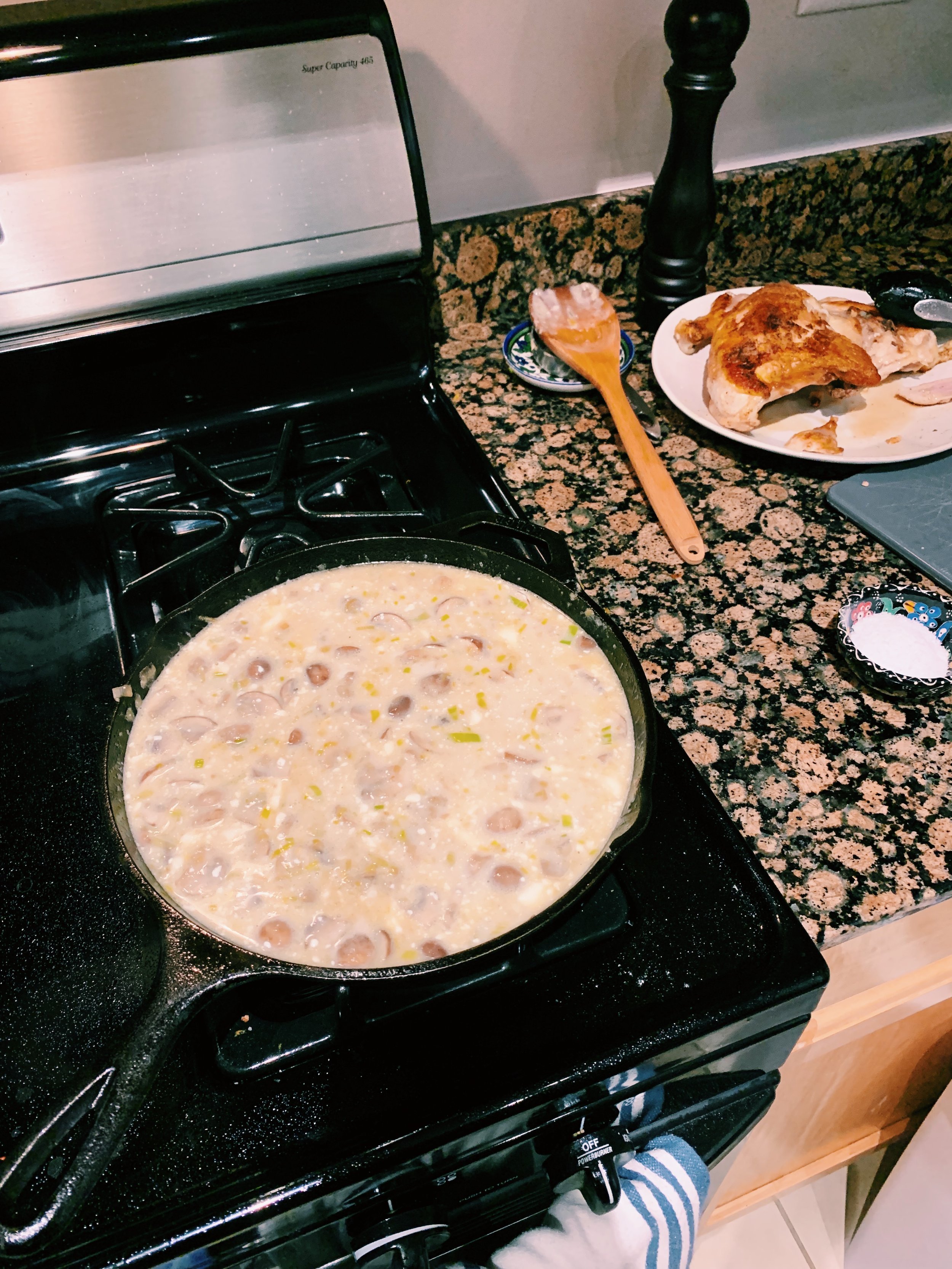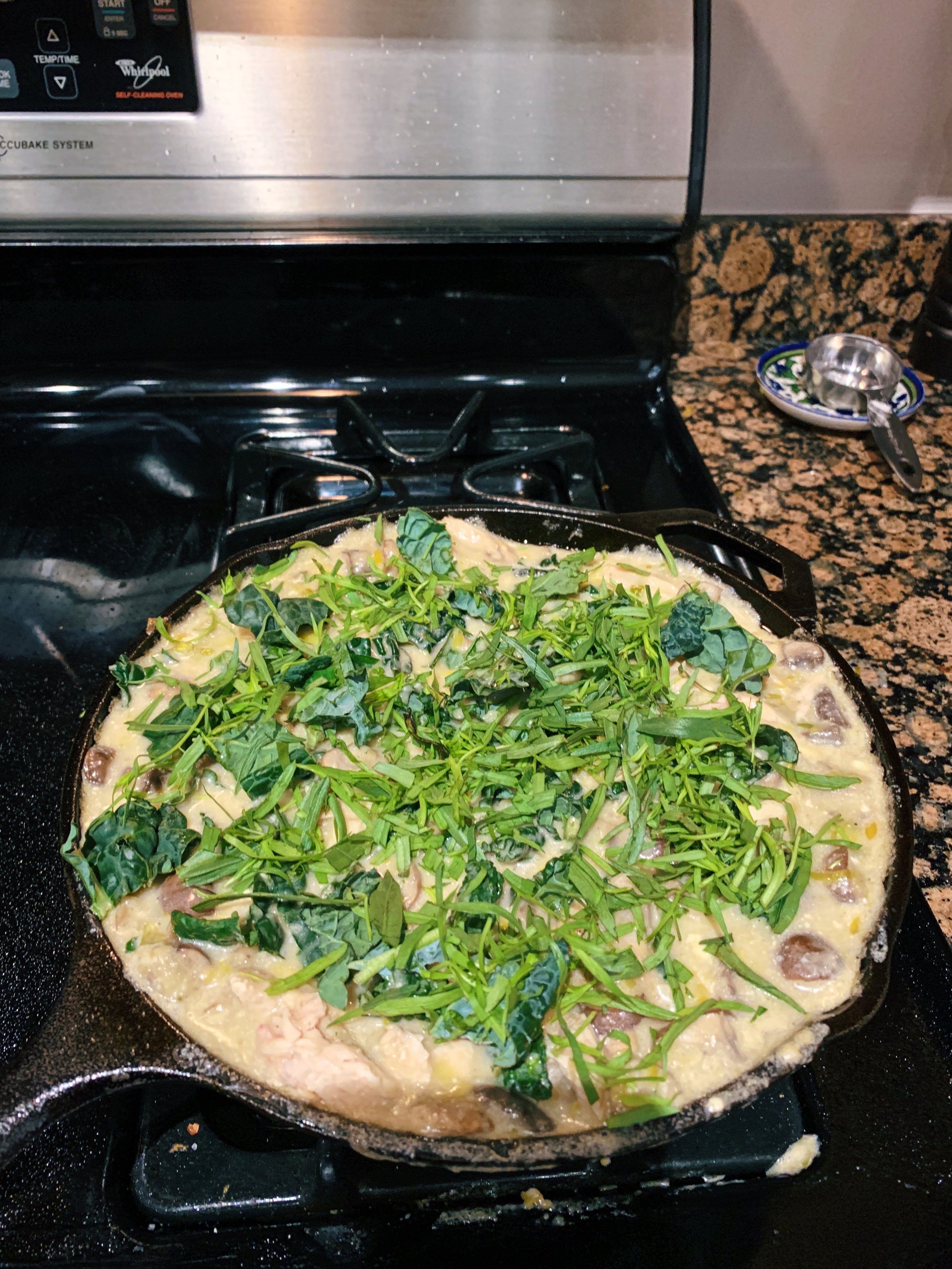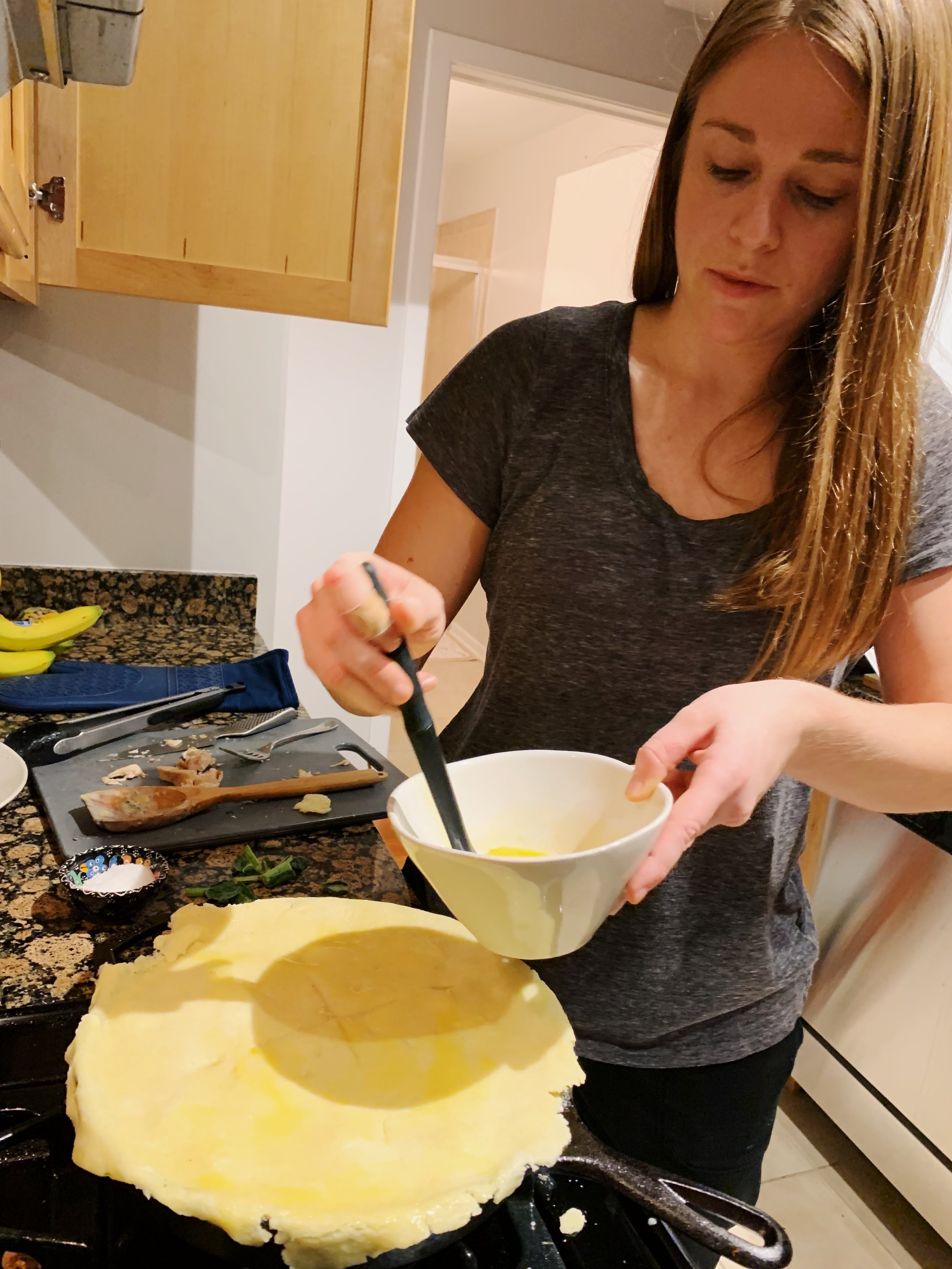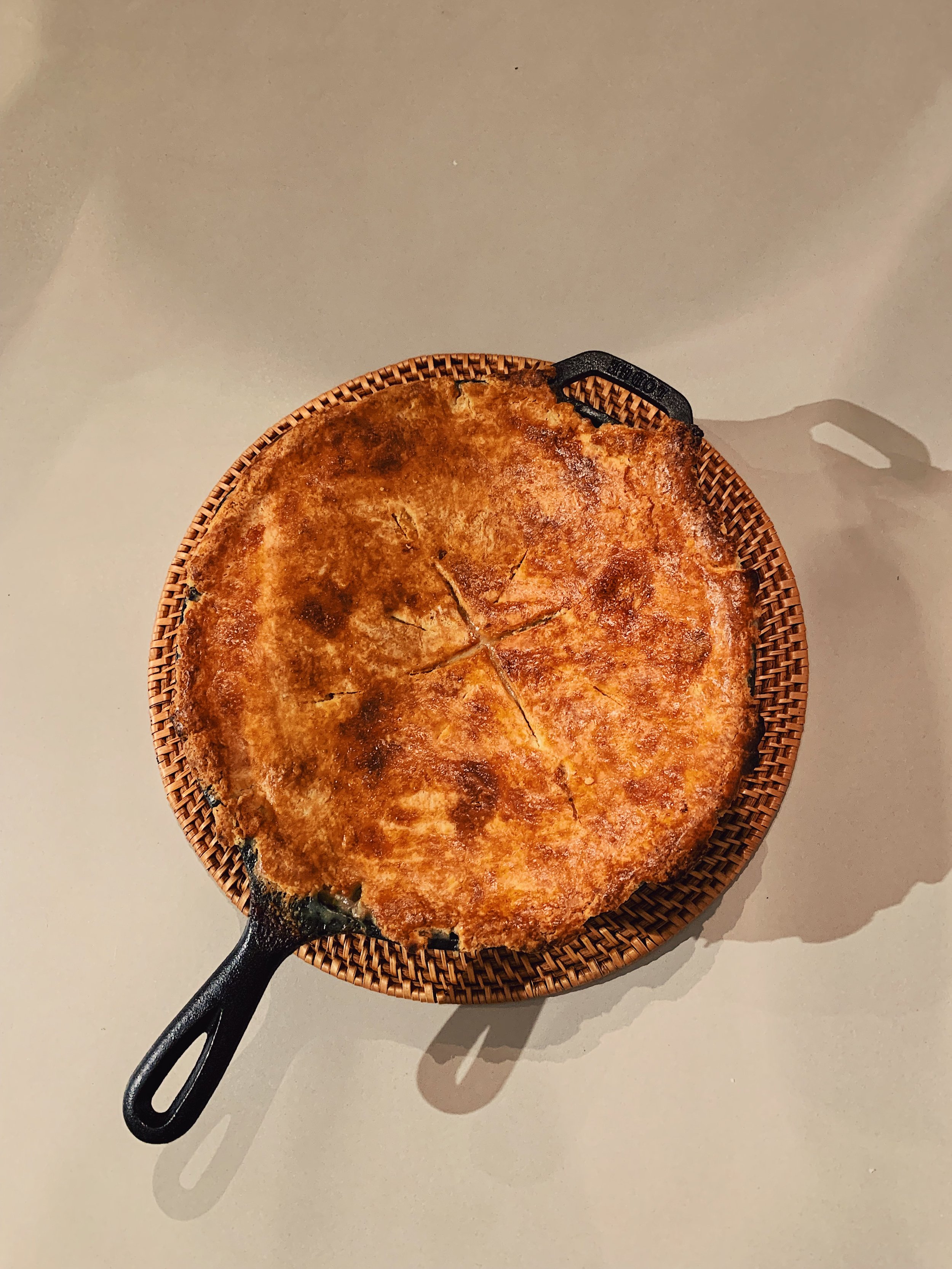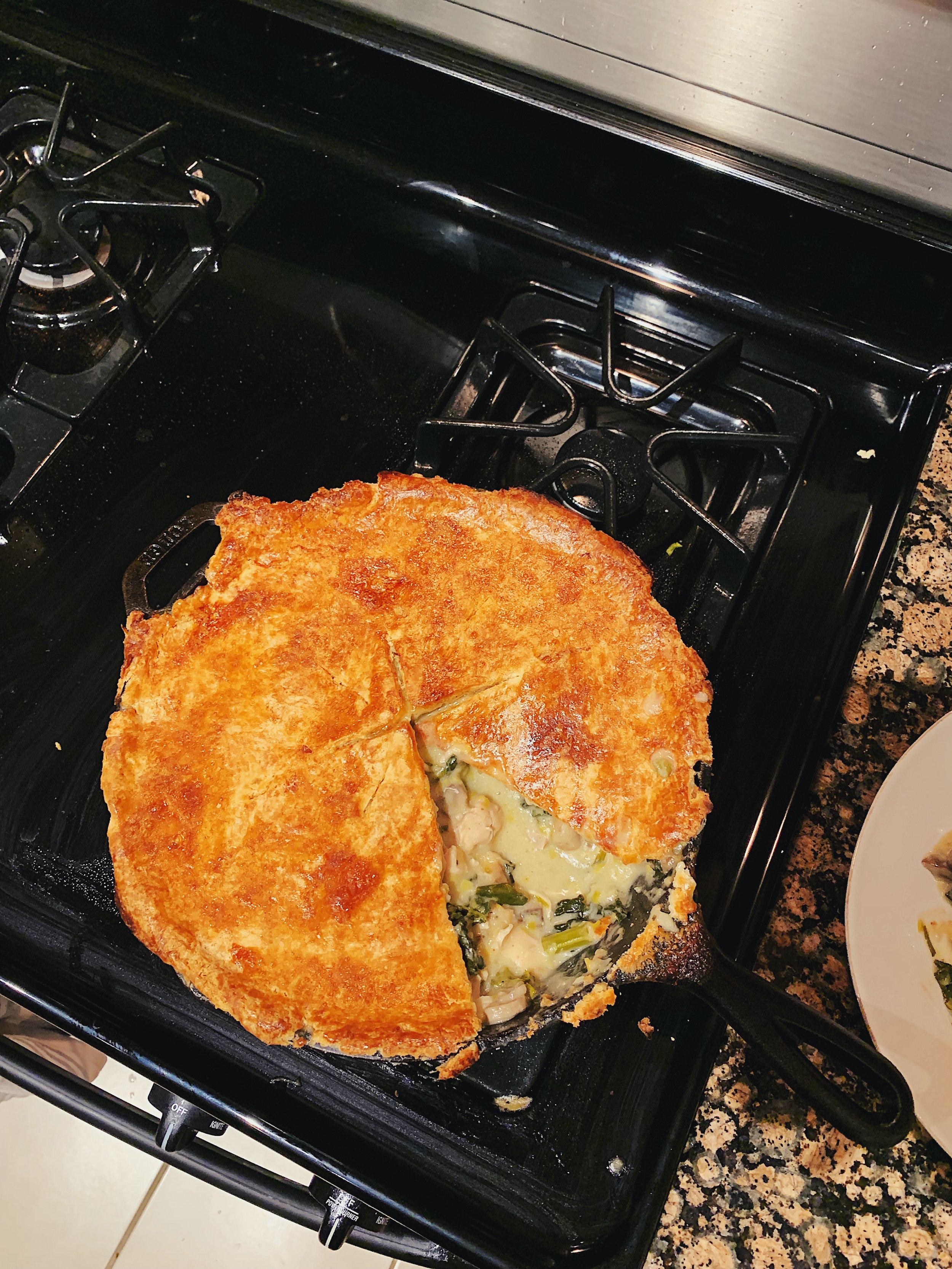I have an extraordinarily hard time doing nothing. I’m alone in my apartment for the first time in weeks, and instead of just watching the sun move across my furniture like I should, I feel compelled to immediately produce something, write something, be useful for goodness sake. I live in a constant state of urgency to accomplish more, maximize time. I wonder how many other people feel this level of pressure to be productive. Do they fight it and close their laptops to be still? Do they give into that hunger for checking a box and write about lamb chops instead?
I choose to write about lamb chops. Who knows, perhaps I’ll choose stillness tomorrow…
This was my first time ever cooking lamb chops. Given the priciness of this cut of meat, I chose to make a half-recipe just for Jordan and I. I bought the lamb at Whole Foods, unfrenched. (To save someone else the task of googling “frenched vs. unfrenched lamb chops,” I’ll just summarize the results for you: Frenching is the process of scraping the fat and meat off of one end of a bone to make it easier to hold. Unfrenched chops have less room for a good grip on the bottom, but then you get to have more meat.)
I ground up some cumin seeds, peppercorns (I used regular black ones, Szechuan sets my mouth on fire in a bad way), and pepper flakes with my mortar and pestle, then added salt to the mix. After rubbing the spices on all sides of each chop, I cooked them in my cast iron skillet, about 5 minutes per side, until 140 in the center, knowing they would rise to 145 as they sat. I then seared the scallions in all that lamby, fatty goodness, and tossed in the chopped peanuts and rice vinegar. The whole process took about 25 minutes - yes, that’s it!
I served the lamb chops with Alison’s Persimmon & Pear Salad with Spicy Pecans and Blue Cheese salad - a strong combination bursting with flavor. I’ve eaten a good bit of tough lamb over the course of this project, but these chops were anything but. The meat was tender, not too chewy, and full of flavor. I savored every bite.
The sun is still setting and my living room still feels safe and quiet. Maybe I can accomplish some writing and resting in the same afternoon? (There I go saying rest is something to accomplish…)
184 recipes cooked, 41 to go.



